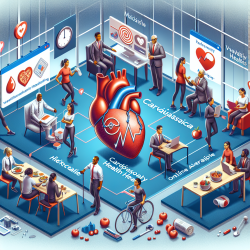Introduction
Autism Spectrum Disorder (ASD) is a complex neurodevelopmental condition that affects 1 in 36 children in the United States, according to the latest Autism and Developmental Disabilities Monitoring (ADDM) report. While genetic factors play a significant role, environmental influences and drug exposures during prenatal and postnatal periods are increasingly recognized as crucial contributors to ASD. Recent research, particularly the study "Roles of Epigenetics and Glial Cells in Drug-Induced Autism Spectrum Disorder," sheds light on the potential mechanisms through which these factors operate.
The Role of Epigenetics in ASD
Epigenetics involves modifications to DNA that alter gene expression without changing the DNA sequence. This can happen through mechanisms such as DNA methylation and histone modification. Prenatal exposure to certain drugs like valproic acid (VPA) and acetaminophen (APAP) can trigger these epigenetic changes, potentially leading to ASD. For instance, VPA is known to inhibit histone deacetylation, leading to synaptic dysfunction and neurogenesis deficits. On the other hand, APAP's effects are mediated through DNA methylation, affecting genes involved in oxidative stress and neurotransmission.
Glial Cells: The Unsung Heroes
While neurons have traditionally been the focus of ASD research, glial cells are gaining attention for their crucial roles in brain function and development. Glial cells, including astrocytes, microglia, oligodendrocytes, and NG2 cells, are involved in maintaining homeostasis, providing metabolic support, and regulating neurotransmitters. Abnormalities in these cells have been linked to ASD.
- Microglia: These cells act as the brain's immune system. Overactivation can lead to neuroinflammation, a common feature in ASD.
- Astrocytes: They support neurons and maintain the blood-brain barrier. Disruption in their function can affect neurotransmitter metabolism and synaptogenesis.
- Oligodendrocytes: Responsible for myelinating neurons, these cells are crucial for efficient neural communication. Abnormalities in these cells have been observed in ASD models.
- NG2 Cells: These versatile cells can differentiate into various glial cell types and are involved in synaptic plasticity.
Implications for Practitioners
Understanding the roles of epigenetics and glial cells in ASD opens new avenues for interventions. Here are some actionable insights for practitioners:
- Early Screening: Consider incorporating genetic and epigenetic screening for early diagnosis and personalized intervention plans.
- Targeted Therapies: Epigenetic therapies, such as histone deacetylase (HDAC) inhibitors, show promise in reversing some ASD symptoms.
- Microbiome Management: Given the gut-brain axis's role in ASD, consider dietary interventions and probiotics to support gut health.
- Holistic Approaches: Combine traditional therapies with novel interventions targeting glial cell function and epigenetic modifications.
Conclusion
The research on epigenetics and glial cells offers a promising frontier for understanding and treating ASD. By integrating these insights into practice, we can move towards more effective, personalized interventions that improve outcomes for children with ASD.
To read the original research paper, please follow this link: Roles of Epigenetics and Glial Cells in Drug-Induced Autism Spectrum Disorder.










